10 ways to make your ‘clutter’ and collections look beautiful
Discover how to display collectibles like a pro with these inspiring ideas and expert tips

- 1. Work in odd numbers and triangles
- 2. Create custom-shelving for collections
- 3. Display collectibles on adjustable shelving
- 4. Create a gallery wall
- 5. Display collectibles in a beautiful glazed cabinet
- 6. Display collections in the kitchen
- 7. Incorporate shelf lighting
- 8. Showcase collectibles in a hallway
- 9. Make use of alcoves
- 10. Arrange items by color

Whether it's artwork, books, ceramics, or decorative objects, collectibles are a wonderful way to bring unique personality into interiors. As well as having aesthetic appeal, collectibles hold meaningful stories and bring a sense of narrative to a room. They can spark happy memories, make great talking points with guests and add depth and texture. However, without careful curation, cherished possessions can easily become clutter.
To help you make your collections look beautiful (and not like an over-stuffed charity shop) we’ve reached out to professional interior designers for their tips on creating artful displays including ideas for collectibles to display and how to arrange them, no matter what your interior design style.
How can you make collectibles look beautiful?
Filling spaces with the things we love is what puts the heart and soul into our homes, but collections should always enhance a scheme rather than hinder it - the key to success is all down to careful curation and display.
‘When thoughtfully displayed, collectibles bring warmth, individuality, and a sense of story to any space,’ says interior designer Lauren Gilberthorpe.
‘We all have things that we love, and these personal mementos are what makes a house a home. By creating a really cohesive and stylish display, you can really transform what some might think is 'clutter' into intentional, artful collectibles.’
When decorating with antiques or collectibles, giving your pieces the space they deserve is important, so the first step is always to start with a blank canvas. Decluttering before you create your displays is key and when embarking on a room design try to incorporate plenty of concealed storage from the outset - this allows you to hide away eyesores, leaving surfaces clear for curating considered and beautiful displays. Once you have a blank canvas, it’s much easier to visualize how your collections will look and how you want to display them.

The world is really your oyster when it comes to what collectibles to display and how to display them. There are no set rules, however there are a few tips that can help elevate your collections. When we asked the interior designers grouping objects by theme was a popular approach.
Design expertise in your inbox – from inspiring decorating ideas and beautiful celebrity homes to practical gardening advice and shopping round-ups.
‘The key is to be intentional by grouping similar items together for unity, for instance, hanging a collection of plates/baskets on the wall to create a feature out of them,’ says Emma Deterding, founder of Kelling Designs. ‘Arranging objects with shared materials, patterns of colors helps to create cohesion, whilst playing with shapes and sizes will add visual interest.’

'You then want to complement the displays with textiles and accessories in other parts of the room that echo their colors, like cushions, throws or other decorative ornaments,' adds Emma. If you're looking to turn your clutter into considered displays these stylish ideas and expert tips are just what you need.
1. Work in odd numbers and triangles

When decorating shelves, many interior designers and stylists advocate arranging items in groups of three of five and working in triangles to create visual balance. To create pleasing vignettes begin with a large item at the back such as a painting and then add items in stages of height on either side until you have a balanced arrangement. You're looking to create a pleasing rhythm of different heights and subtle textures along the shelf.
Decorating with plants or greenery is a perfect finishing touch which will bring styled shelves to life. 'We like to play with different heights and textures,' says interior designer, Sean Symington. 'Here we've used lots of different ferns at different heights. We also like grouping vessels together - we look for French confit pots and vintage stoneware as they bring texture.'
2. Create custom-shelving for collections
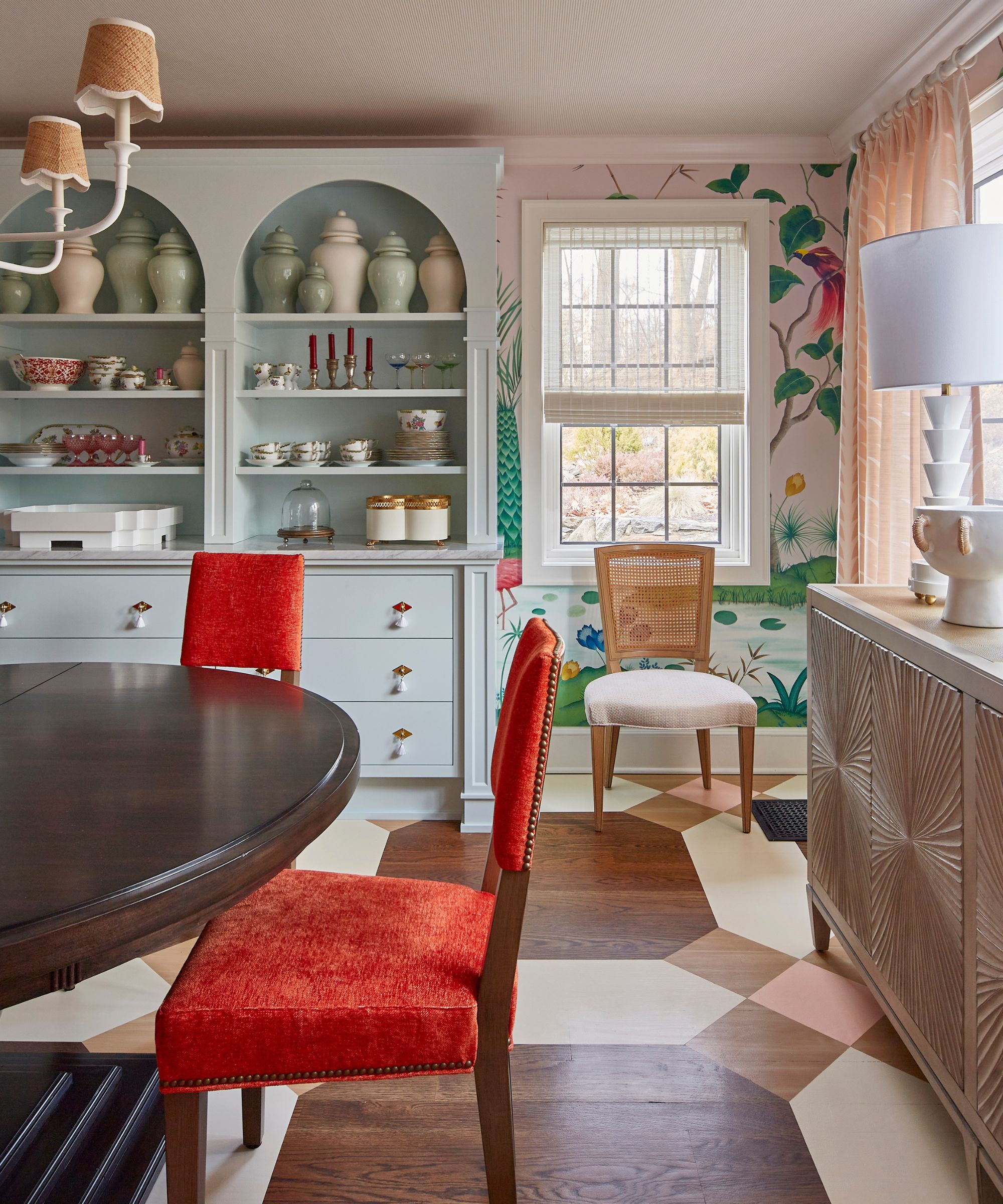
If you have cherished ceramics and dinnerware it can be a shame to hide them in cupboards when you could have them out on display. Having custom-built shelving made is an effective way to display collectibles as the joinery can be tailored to fit around the things you want to showcase. Here interior design firm Toledo Geller commissioned bespoke shelving to house a client's tableware collection.
‘The tea cups and plates were passed down for generations. Our client loves using her vintage pieces for everyday life and didn’t want them tucked away like most people. We took the opportunity to showcase them in a custom-built dresser in her new colorful dining room where they are now a showpiece,’ say Jessica Geller and Virginia Toledo, co-founders of Toledo Geller.

A slimline plate rack
Painting your cabinetry in a bold color, or in a color that contrasts with your pieces is an effective way to collections and ceramics really stand out. Interior designer Sean Symington loves to incorporate vintage pieces and collectibles in his projects. In this kitchen design he incorporated a slimline bespoke plate rack in soft pink to showcase a collection of bold green cabbageware ceramics.
3. Display collectibles on adjustable shelving
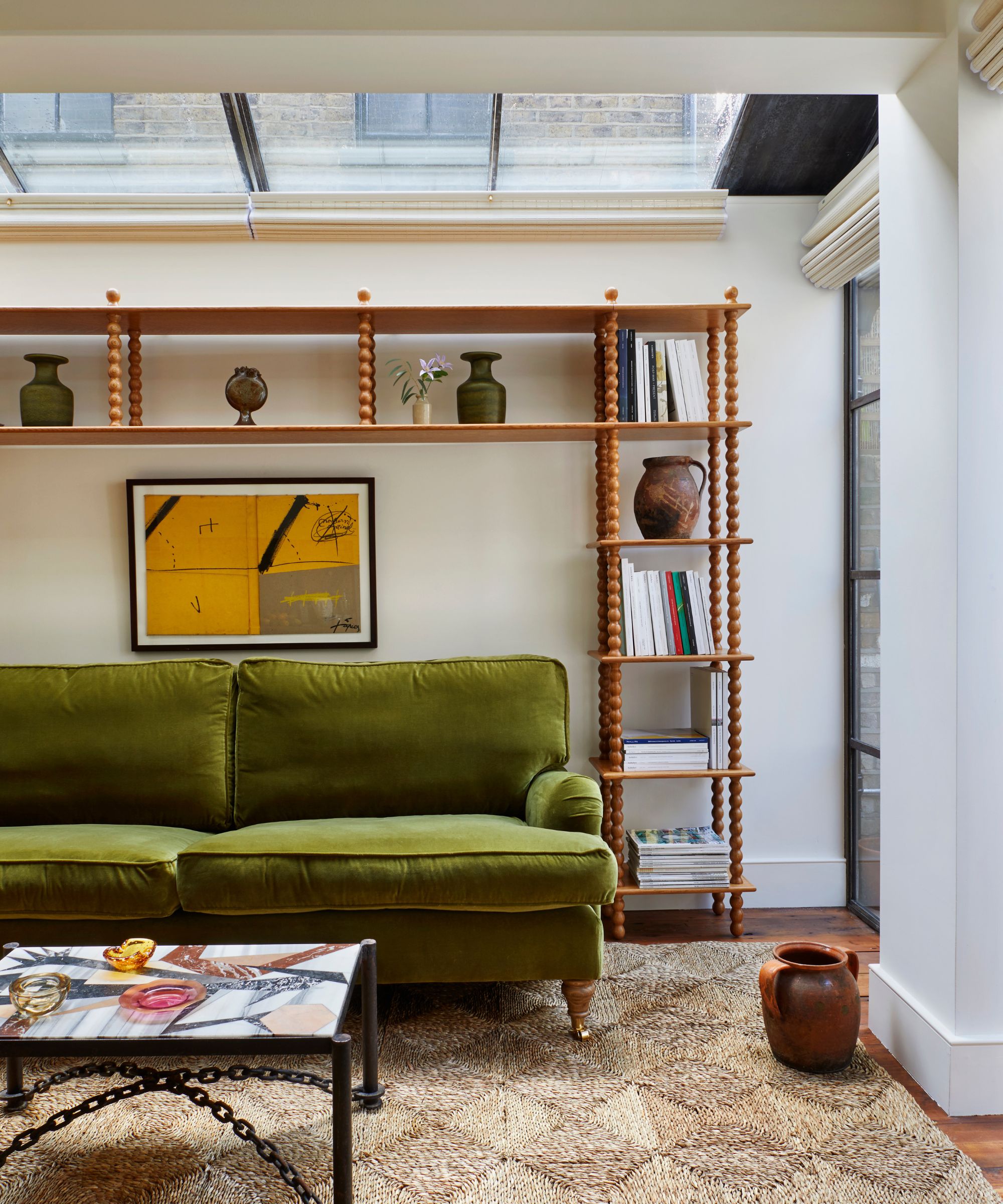
Rearranging displays every now and then helps keep rooms feeling fresh, but when you have fixed shelving your options can be limited. Adjustable shelving that can be altered depending on what you want to display makes a clever and practical way to display collectibles, as demonstrated in this project by interior designer, Olivia Outred.
‘In this family house we designed a fitted shelving piece, with shelves that can be slotted in and out, and heights that can be changed, to house our client’s own collection of smaller antiques and accessories. We placed pieces of art amongst them and small lamps; it celebrated all the pieces and was a place to keep beautiful things safe and in your eyeline,’ explains Olivia Outred.
4. Create a gallery wall
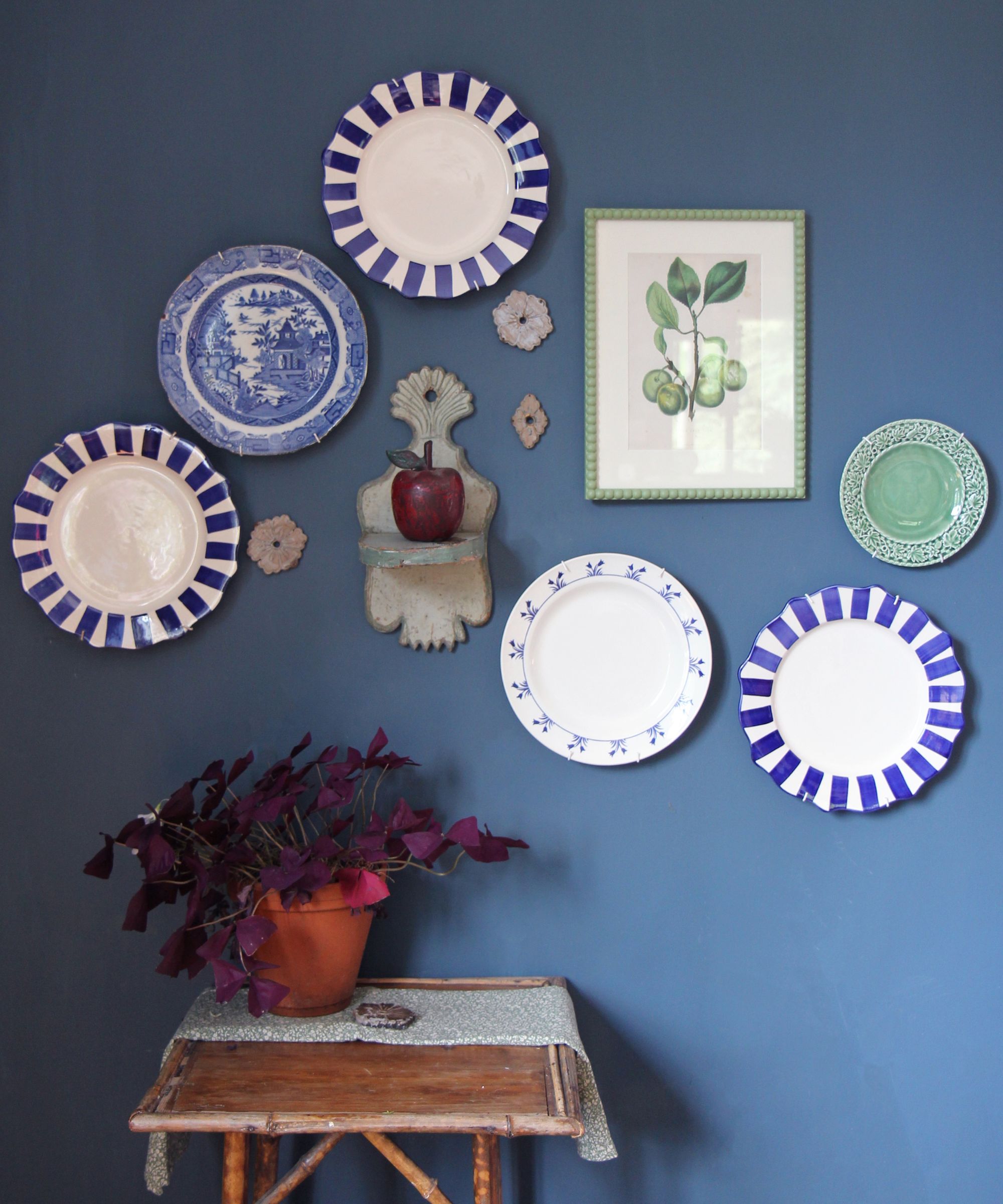
Displaying a cluster of collectibles as part of a gallery wall makes a wonderful alternative to having one large artwork. It works well over a sofa or in a stairway and pieces can really pop set against a bold paint color.
'When displaying collectibles, think about creating a story on your wall. Combine plates with other objects like framed prints, decorative tiles, or vintage finds to add depth and interest,' advises Libs Lewis, founder of British home store Domestic Science. 'Plates aren’t just for the kitchen – used creatively, they can bring charm and character to any room in the house. Use a harmonious color palette to tie the collection together, like the blue and green tones here, and don't be afraid to mix patterns and textures. Finally, vary the heights and spacing of the pieces for a more organic, curated feel, and let your arrangement reflect your personality.'
When creating a gallery wall the key is to create a balanced composition with a mix of sizes, shapes and textures. Be sure to plan your arrangement on the floor before knocking in nails.

Interior designer Penny Morrison is a collector of ceramics and loves to display them on the wall. 'Plates can be very pretty - either in a bookcase or, either side of a mirror or even a whole wall of plates - either in a set or in similar styles or colors. A set of old French oyster plates are attractive - or a series of blue and white in various styles from serving platters to dinner plates,' says Penny.
'Similar plates work well in a pattern but a variety of sizes look better placed randomly. Try your layout on the floor and make a template before hanging. If you are displaying a collection on shelves place them randomly so it looks as though you have collected them organically over time rather than as ready-made collection.'
5. Display collectibles in a beautiful glazed cabinet
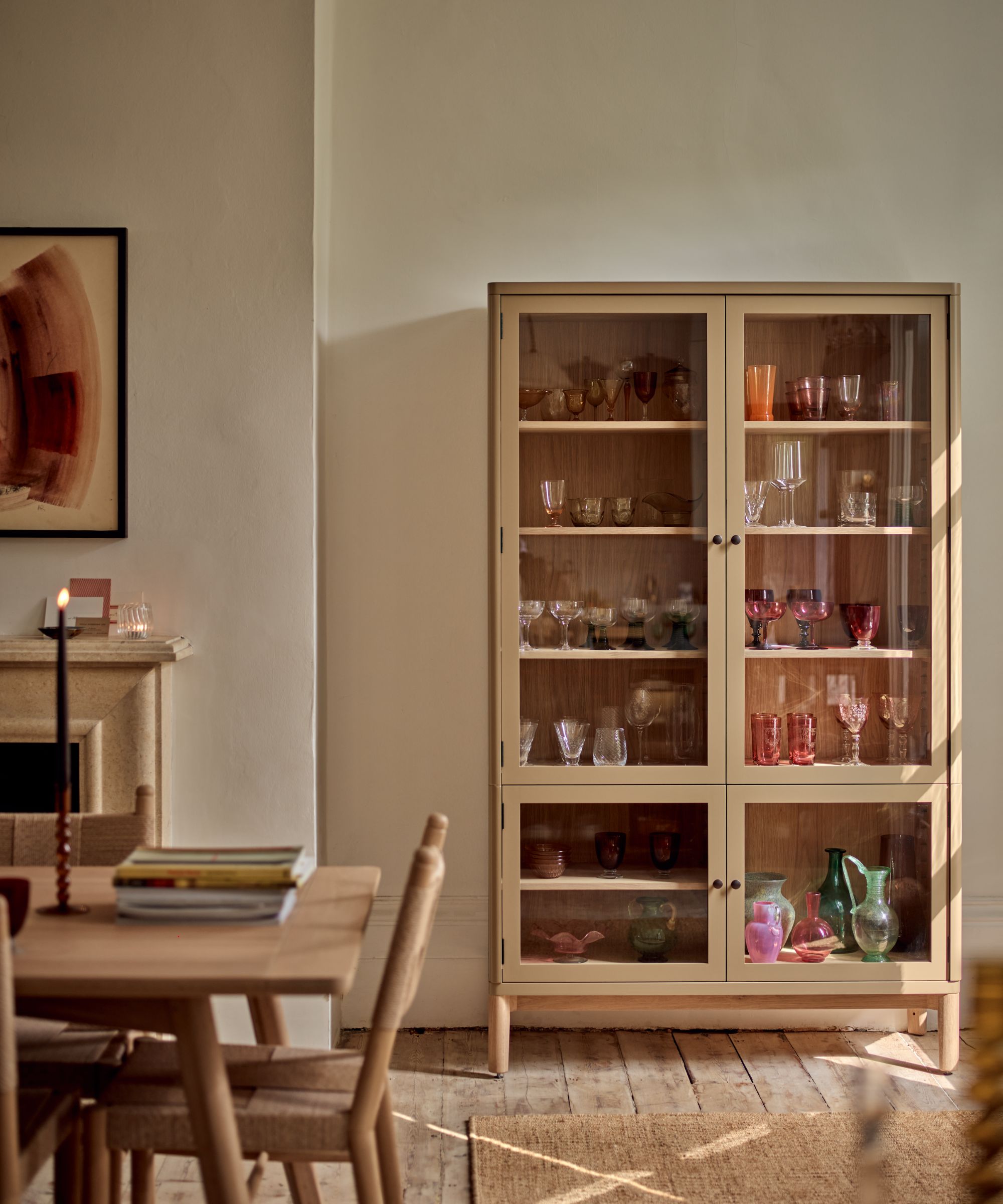
When it comes to displaying collectibles that you also use for dining then glazed cabinets are an obvious choice, as they allow you to showcase decorative glassware, tableware, ceramics, or vases without the need for constant dusting.
'Displaying your glassware and tableware in glass-front cabinetry, allows you to showcase the things you love, while keeping them protected and accessible. Alternatively, you can showcase your favorite collectibles on open kitchen shelving, arranging your collection by size, color, or style for a sophisticated yet decorative display,' advises Fred Horlock, design director at Neptune.
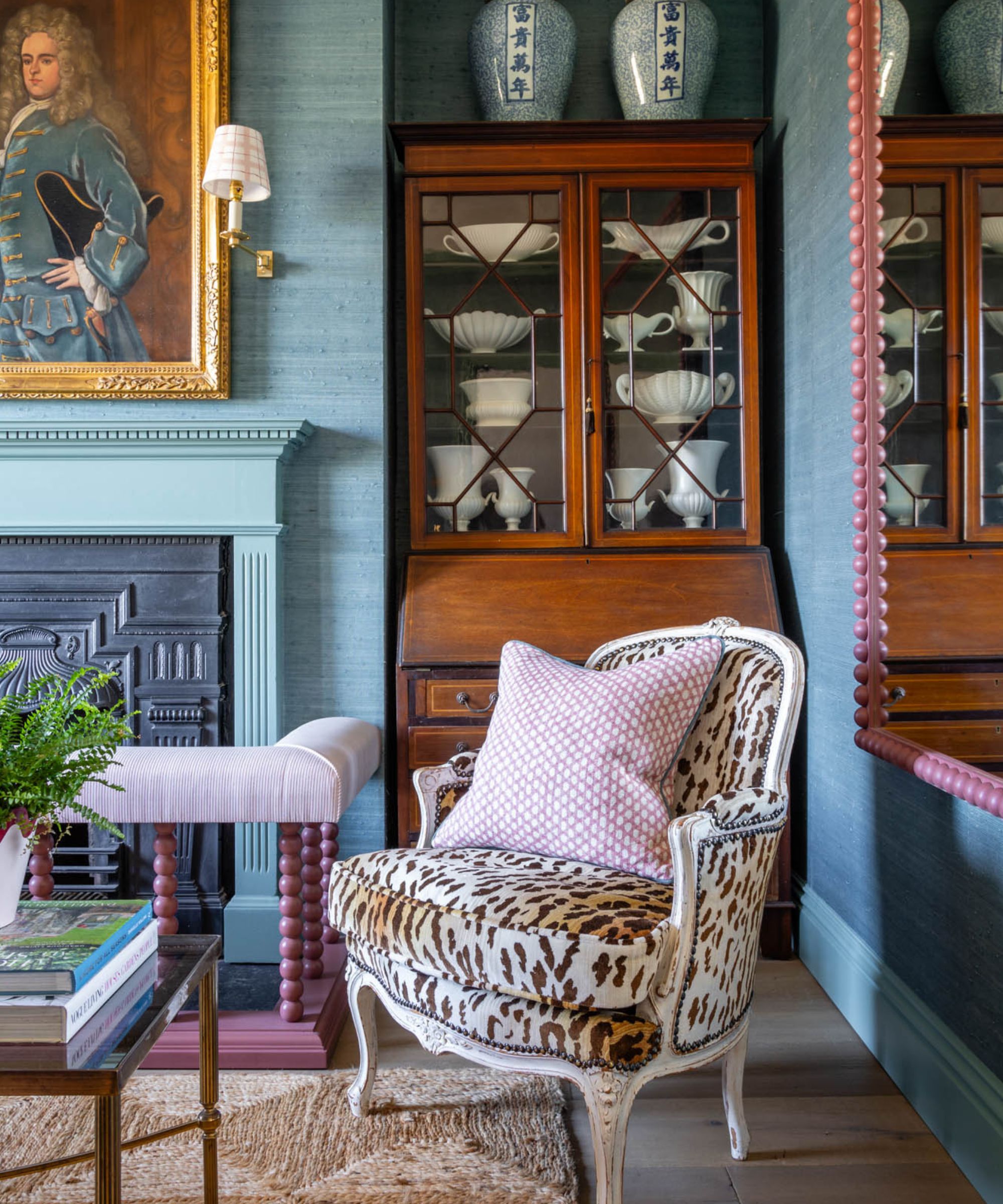
For a timeless look, you can't go wrong with a light oak design with simple sleek lines. Alternatively, antique designs would be perfect for a traditional scheme. Cabinets made from dark woods are easy to come by and affordable. 'We love brown furniture, it looks great against colorful walls,' says Sean Symington.

When displaying collectibles it's fun to think a little outside the box. Glass-fronted cabinets don't need to be wall-mounted or free-standing - you could also have them built into a kitchen island, too as demonstrated in this kitchen by Meg McSherry Interiors.
6. Display collections in the kitchen
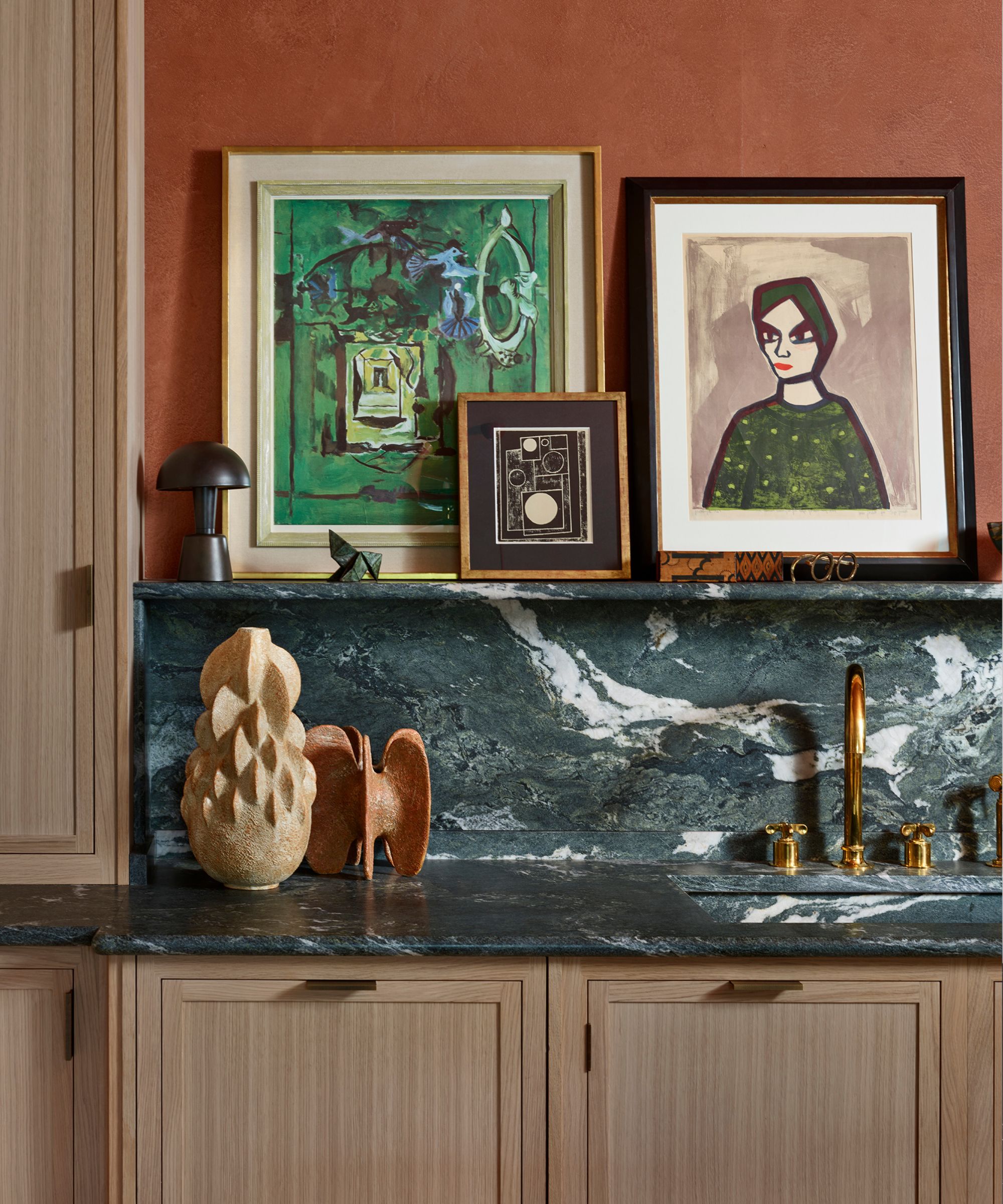
There's no reason collections should be limited to living rooms – practical spaces like hallways, kitchens and utility rooms are wonderful places to surround yourself with things you love.
'We often spend so much time in the kitchen; why not display some of your most treasured items there?' says Venetia Rudebeck, co-founder and partner, at Studio Vero. 'When creating interiors for our clients, we want our design and curation to reflect their personality, heritage and travels and feel that within every room is the opportunity to tell a story and evoke a memory.'
The kitchen trend for replacing wall cabinets with open shelving is still going strong. Not only does it create a more spacious feel in a kitchen, the open kitchen shelving makes a wonderful place to display artwork.
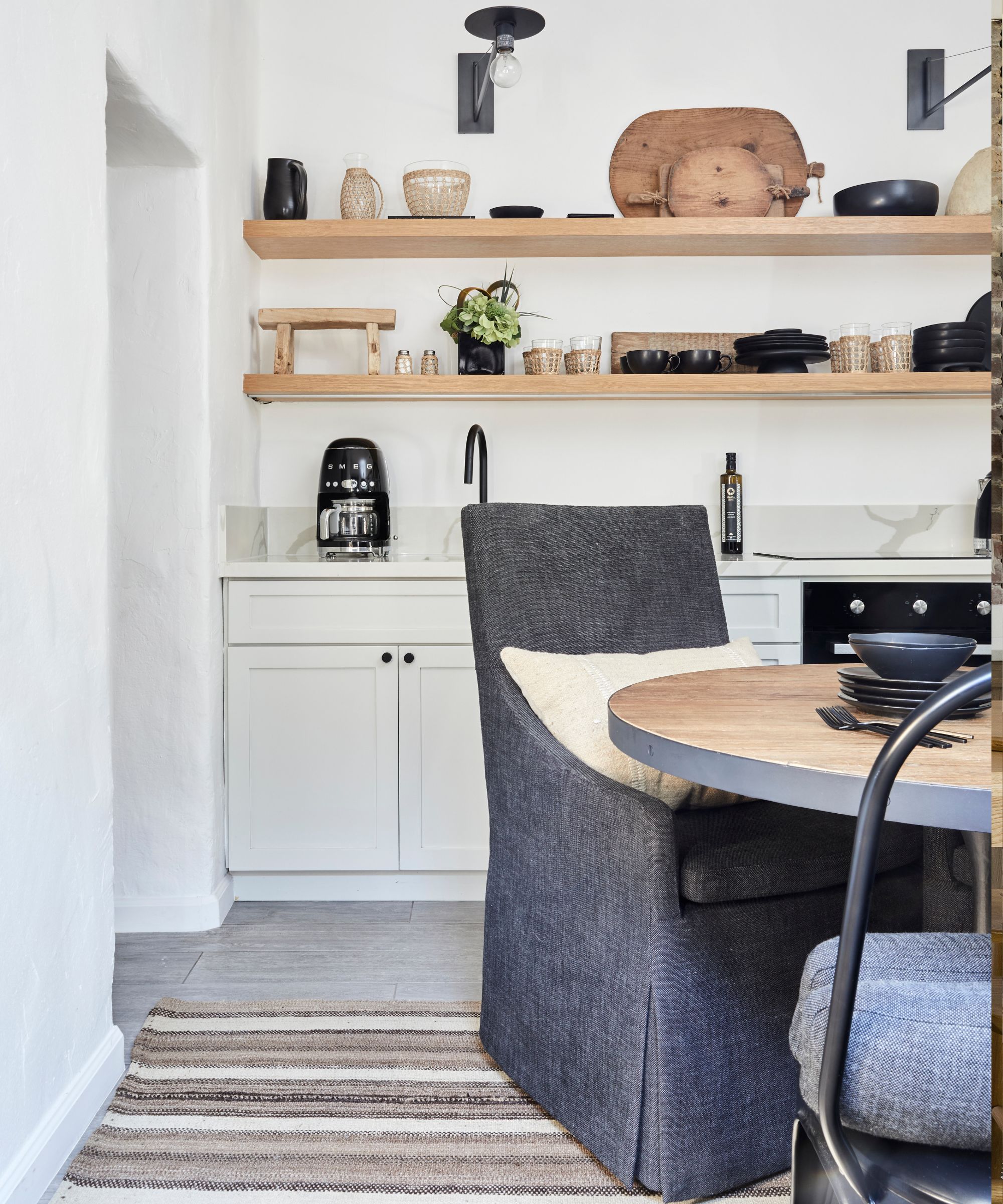
When is comes to styling kitchen shelves ‘Do not have all the items on a longer shelf the same height,’ advises interior designer, Julia Dempster. ‘Not only should you contrast materials, but height too. I would recommend using a series of elements as they add more impact. If you need to add height and cannot find the height of vessel or vase you need, add books piled to gain height and create a mini pedestal below the item. I have also like using a cake stand as a pedestal to gain height.'
7. Incorporate shelf lighting

Having good lighting is essential for showcasing collections well. If you're considering bespoke joinery think about having LED lighting recessed into the shelves to so that your cherished possessions can shine during the evening.
'There are several ways to make open shelving displays look more expensive and luxurious. I always recommend built-in joinery, as it offers a tailored, premium feel,' says Katerina Tchevytchalova, director and interior designer at K'Arte Design. 'Styling the shelves with a mix of textures and finishes - such as metal accents or ceramics – can elevate the look without overspending. Incorporating built-in LED lighting on the shelves enhances the ambiance and draws attention to displayed items. Finally, sticking to natural and muted color palettes ensures a cohesive and curated appearance that seamlessly integrates with the overall space and allows the items on your display to sing.'
8. Showcase collectibles in a hallway

Displaying collectibles in connecting spaces like hallways and entryways is a wonderful way to make use of wall space that can often be overlooked. Lining shelves with cherished pieces will create fun talking points with guests and instantly brings a sense of personality.
‘In designing this staircase, we recognized the potential of the space beneath the window and sought to make the most of it. As a result, we created this quaint bookcase that greets you upon arrival in the entry. It's home to all of the vintage goodies we've found in town- filled to the brim with petite antique books, baskets and just a blend of old and new things that I love,’ explains Meg McSherry, founder of Meg McSherry Interiors. 'Our intention was to create a warm, welcoming atmosphere that feels both eclectic, inherited and inviting.'
9. Make use of alcoves

Awkward spaces like alcoves are ideal for displaying collectibles and making use of what can be dead space. Having bespoke shelving fitted is the most effective way to create shelving for display as it can be tailored around the architecture. Here interior designer, Christian Bense, opted for natural wood alcove shelving which beautifully complements the organic quality of the ceramics.
'I think it's really important to display collectibles throughout a home – you shouldn't designate them to just one room like a living room but think about spaces like entrance halls too. For one entrance we combined shoe storage with open shelves for a client's ceramic collection. It provided a practical solution for an entrance hall but also softened the space by having items on display and becoming more artwork focused,' explains Christian Bense.
10. Arrange items by color

For an easy way to bring cohesion to collections try grouping items by tone and palette. Here interior designer Julia Dempster chose items bound by warm neutral tones and created interest using height and texture. Creating displays in a unified palette helps you appreciate form and structure and keeps spaces feeling calm.
'I like to limit the color selection to three as it will create a very busy shelf,' explains Julia. 'I prefer to use contrasting textures, for example, glass next to a textured vase or a wooden vessel to get contrast. The contrast of textures of for example reflective glass against a raffia bottle or a rough pottery vase makes the items stand out.
Concealed recessed lighting in shelves can throw illumination on the beautifully curated items, one of my favorite things to do as it adds an extra dimension to the interior.

'Even everyday items like books and vases can double as decor if you carefully consider the pieces you choose. By keeping everything in the same complementary shades, you can create a really cohesive look that's balanced,' says Emma Deterding, founder of Kelling Designs.
In this guest bedroom by Salvesen Graham books arranged by color help bring order and calm.
Displaying your collections can add so much depth and character and personality to your home. They should be out on display, it's just a case of styling them right so they don't turn into clutter.

Pippa is a contributor to Homes & Gardens. A graduate of Art History and formerly Style Editor at Period Living, she is passionate about architecture, creating decorating content, interior styling and writing about craft and historic homes. She enjoys searching out beautiful images and the latest trends to share with the Homes & Gardens audience. A keen gardener, when she’s not writing, you’ll find her growing flowers on her yard for styling projects.